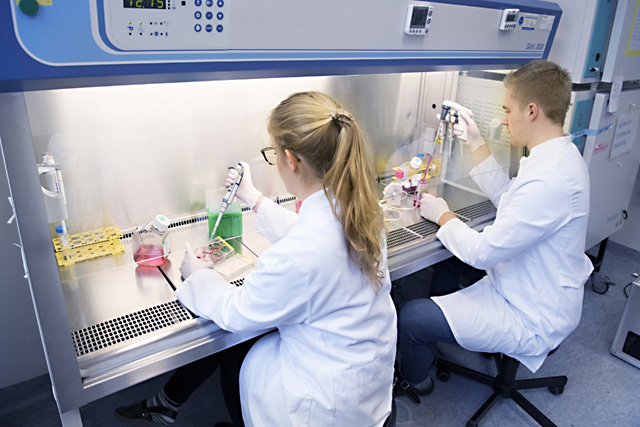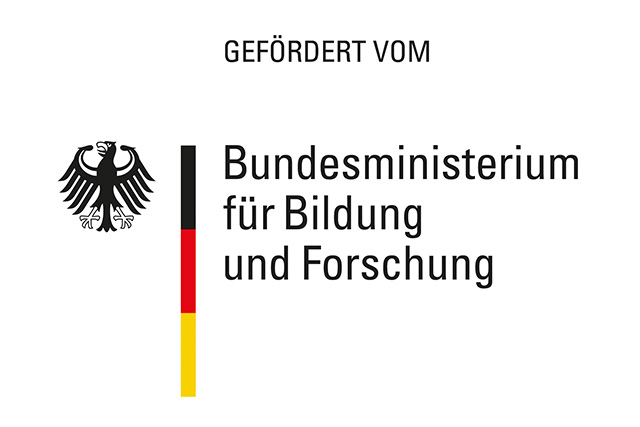New test procedure to replace worldwide standard animal testing - project launched

The ImAi project, funded by the Federal Ministry of Education and Research, is intended to create an animal-free replacement for the Draize test on rabbits used worldwide to assess the eye irritancy potential of chemicals. The new test is based on tissue models of the cornea cultivated in the laboratory. At the end of the project, a new standard procedure should be available for use worldwide.
Every chemical substance that is put into circulation has to undergo various tests in order to define the respective hazard potential and declare it accordingly. One of these tests examines the potential risk of eye irritation if the substance literally "goes in the eye" and classifies the substances accordingly into categories "1" for irreversible damage, "2" for reversible damage or "non-labelled" if the substance is not irritating. Since 1944, a stressful toxicological test on live rabbits, the so-called "Draize eye irritation test" (according to OECD test guideline TG 405), has been carried out worldwide to classify the harmfulness of substances to the eye. To replace this tedious procedure, various attempts have already been made to cultivate tissue models of the human cornea in the test tube (in vitro) and use them as test systems. However, as current tissue models do not allow the distinction between irreversible and reversible damage, animal experiments have so far only been reduced, not replaced. An efficient alternative to animal testing is not only necessary for ethical reasons. Under EU law, animal testing is now generally only permitted to a limited extent. For example, new substances intended for use in cosmetics may no longer be tested on animals in the EU.
Researchers from Würzburg at the Translational Center for Regenerative Therapies of the Fraunhofer Institute for Silicate Research ISC are now using their many years of experience in the field of human tissue models to develop a powerful test system based on a new long-life cornea model in collaboration with experts from the Federal Institute for Risk Assessment, the Goethe University Frankfurt and the companies Clariant Produkte GmbH and Courage Khazaka Elektronik GmbH. "The project should not only completely replace the 'Draize Eye Test', but also allow more reliable predictions to be made, as the tissue model is based on human cells," says Institute Director Prof. Dr. Gerhard Sextl, outlining the goal. The ambitious project is financed by the Federal Ministry of Education and Research within the framework of the funding programme "Alternatives to animal testing".
"The core of the test system will be our modified cornea model. However, in order to be able to differentiate between the different categories of eye damage, we must also develop a non-invasive measurement methodology in the project, which allows repeated examination of the artificial cornea without additional disturbance," explains overall project leader Dr. Christian Lotz from the Fraunhofer Translational Center for Regenerative Therapies. This is the prerequisite for the measurement results also allowing a reliable prediction of potential damage to the eye. If the implementation of the ambitious goals is successful, the new test procedure will be validated at the end of the project for use as a new standard procedure for determining the hazard potential of chemicals. "Our aim is to develop a test guideline within the OECD framework, which will then be available in the risk assessment of chemicals as a non-animal alternative", Lotz continued. Then, after almost 80 years, the end of the "Draize Eye Test" could finally be imminent - which not only the rabbits will not shed a tear.
Translational Center for Regenerative Therapies TLC-RT
The Translational Center for Regenerative Therapies at the Fraunhofer Institute for Silicate Research ISC in Würzburg has been working successfully for some time on a wide variety of tissue models based on the in vitro cultivation of human cells. An important driving force behind this work is the 3Rs principle as a principle of experimental scientific work, which was formulated as early as 1959 by the British scientists William Russel and Rex Burch. According to this principle, animal experiments are to be replaced by other methods as far as possible (Replacement), the number of animals is to be reduced (Reduction) and their suffering in the experiments minimised (Refinement). Two years ago, for example, the Translational Center, in collaboration with the University Hospital of Würzburg, even succeeded in producing a model system of the human blood-brain barrier in the test tube - a success which has been internationally recognised and which is considered to be of great importance for the reduction of animal experiments in the development of new pharmaceuticals against brain diseases. In addition, tissue models of the upper respiratory tract, skin models, models of the intestinal tract and cornea models are being developed at the Translational Center for Regenerative Therapies. They are used to study pharmaceutical agents and physiological processes in diseases.
Project information

ImAi - Validation of an impedance-based eye damage test for the detection of all GHS categories
Funding reference number: 031L0227A
Project partners
Fraunhofer-Institut für Silicatforschung ISC, Translationszentrum für Regenerative Therapien, (Koordinator)
Bundesinstitut für Risikobewertung (BfR)
Clariant Produkte GmbH (Clariant)
Courage + Khazaka Electronic GmbH (C+K)
Goethe Universität (GU), Institut für pharm. Technologie